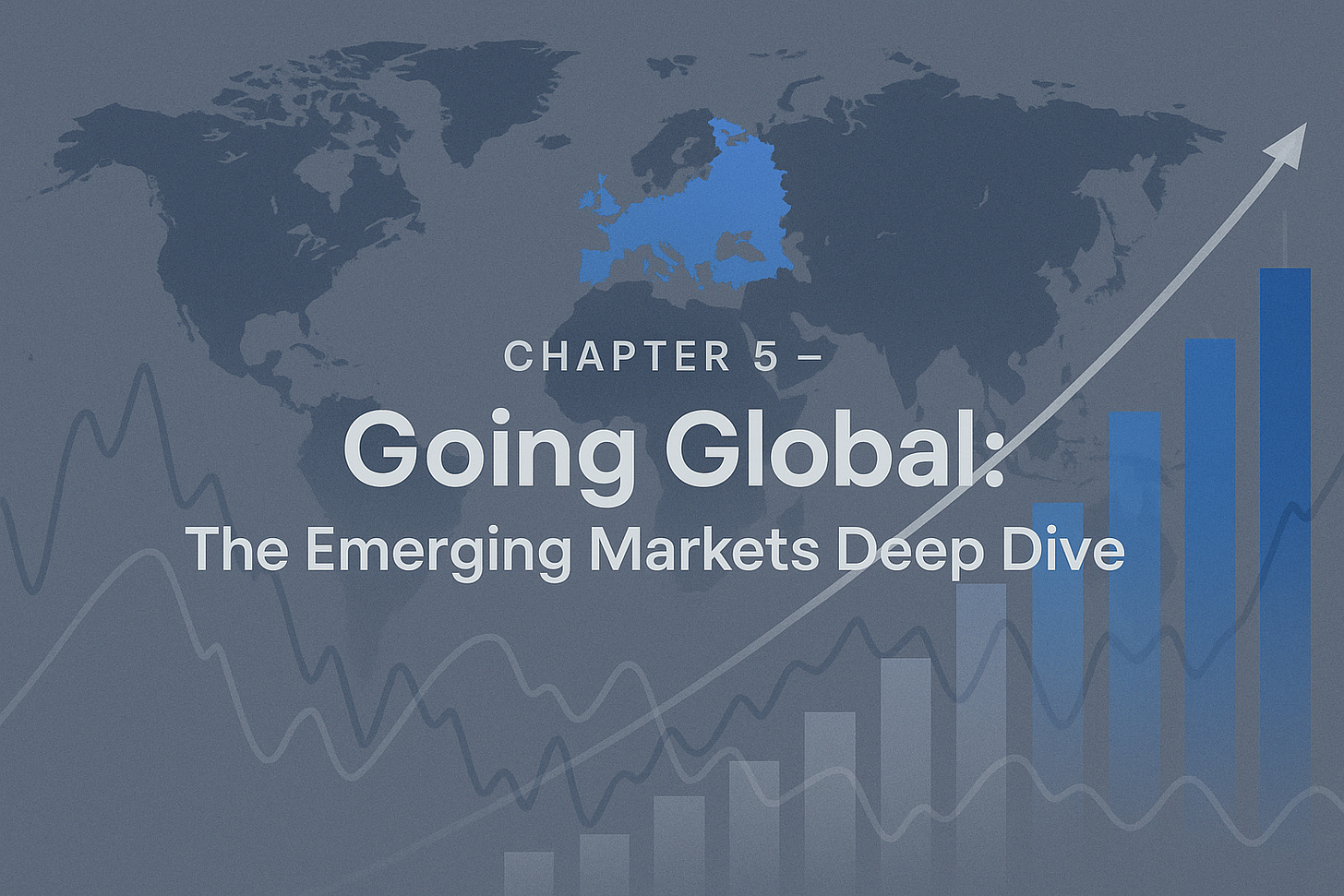Chapter 5 – Going Global: The Emerging Markets Deep Dive
I spent years calling emerging markets "the future of growth." Then I watched my emerging markets ETF deliver 47% total returns while the S&P 500 delivered 210%. This chapter will include what I learned about international diversification—both its promise and its pain.
The theory of emerging markets investing sounds bulletproof: younger populations, faster economic growth, technological leapfrogging, and undervalued currencies should translate into superior investment returns. The reality has been far more complex and, frankly, disappointing.
Yet I maintain an 8% allocation to emerging markets through VWO (Vanguard FTSE Emerging Markets ETF). This chapter explains why I persist with this underperforming asset class and how to think about international diversification in a world where American companies already operate globally.
Keep reading with a 7-day free trial
Subscribe to Wealth Insights to keep reading this post and get 7 days of free access to the full post archives.

